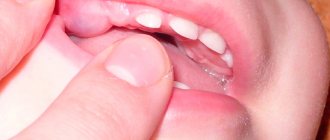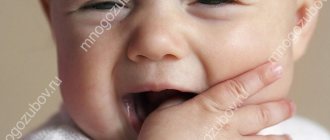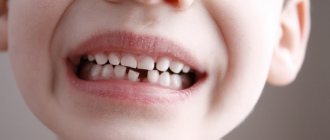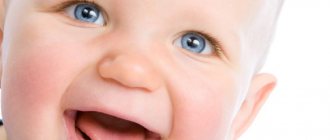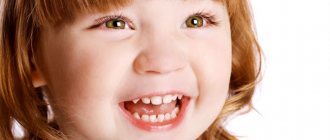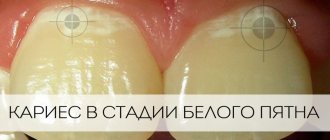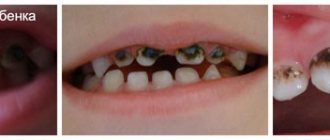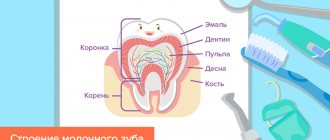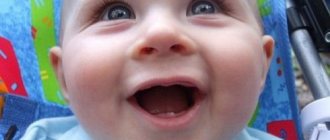A lot has already been said about teething and related problems, many articles have been written, lectures have been given and information has been transmitted from pediatricians. Most parents, long before the start of the process, mentally prepare for the fact that the child will often cry, be capricious, refuse to eat and wake up at night. But there are also problems that are covered in less detail. In particular, one of these problems is a rash on the child’s skin. Is this normal, how to prevent it and how to fight it - we will try to answer all these questions.
As a rule, the first tooth (usually the lower incisor, but there may be variations) begins to appear between 3 months and 1 year of the child’s life. At this time, the same rash associated with teething may form on the child’s skin. It is localized on various parts of the body. Can teething cause a rash on the body or face? Let's figure it out together.
All symptoms of teething are divided into frequently occurring and more rare.
More common ones include:
- Redness of the gums
during teething. - Redness on the face
in the area around the mouth and on the chin. - Increased nervous excitability
in a child. - Lost appetite.
- Heavy salivation.
The fight against all these symptoms is given a significant place among all the articles about the health of the baby during the period of active teething. Let's consider one of the rarer symptoms, namely a rash due to teething.
Is the rash associated specifically with teething?
The answer is yes, it happens. As a rule, during this period, the baby is very excited, the inflamed areas of the gums are very itchy, the child does not find a place for himself and his body responds to this severe stress with a decrease in immunity and a deterioration in the general condition of the body. Therefore, if you see that there is a rash on your child’s body, then to find out for sure whether it could be as a result of teething or is it a response to some allergenic component or microbial infection, you need to visit a doctor. The doctor will examine the child, conduct diagnostic procedures and, if treatment is necessary, prescribe it. But if the doctor does not find any other problems other than a reaction to teething, then this is not a reason to think that the rash is not serious.
Ribbed teeth
Why do ribbed or “wavy” teeth grow? This is the norm. The front surface of the teeth should be even and smooth. But the cutting edge of permanent teeth is ribbed when they erupt. This is especially noticeable on the incisors.
Wavy edges of newly erupted teeth
On the cutting edge of the teeth, the thickness of the enamel is greater than on the front or side surfaces. It is quite enough for the teeth to wear down a little naturally during chewing. Therefore, soon the lower edges of the teeth will become smooth.
But this will only work if the teeth are closed correctly, that is, there is adequate load on the cutting edges. If the teeth are crowded or tilted to the sides, the lower (ribbed) part will not grind down and the visual defect will remain. At least until the bite is corrected.
What kind of rash occurs and why does it occur?
A rash on a child’s body can appear for many reasons, not just when teething; it may also be that the parents simply gave the baby new complementary foods or he became infected with something. You need to make sure that the child is completely healthy and there are no allergenic substances around him, for example, low-quality household chemicals or food. Any of these factors can cause a child to develop a rash on any part of the body. It may appear as redness, be hard or flaky to the touch, itch or sting when touched, and may appear as clusters of pimples or blisters. In any of these cases, the first step is to visit a pediatrician.
If the rash is still not associated with any factors other than teething, you must first determine the location of its main location before moving on to treatment.
Where does the teething rash appear and can it spread beyond the baby's face?
As a rule, such a rash, which can be attributed to teething, begins in the area of the child’s head (face) and neck and looks like in the photo. It spreads in stages, from the place of first localization to more distant places on the body. The next stage is usually the arms, and then the rest of the body and legs. The rash itself feels like a very dry area, sometimes flaking, with increased skin temperature at the site of the rash. In any case, no matter what the rash looks like, it should always be under the careful supervision of parents.
If you notice a rash on your child’s face and are sure that he is absolutely not sick with anything, you should visit a doctor and consult with him what needs to be changed in the child’s routine so that the rash disappears.
Yellow teeth in a child
Yellowing of enamel is not always a consequence of bad habits. Sometimes it occurs in children too.
If the enamel is uniformly yellowish, this is a congenital feature that does not in any way affect the strength of the teeth. If the yellowing is not uniform, but spotty, the spots are more dull than the rest of the enamel surface, this is fluorosis. With it, the spots can be white, but they will still stand out due to their matte surface. Specks appear due to the increased fluoride content in drinking water.
Yellow spots on baby teeth
Yellowing of enamel in children cannot be corrected. All aesthetic procedures are carried out with permanent teeth.
Can this process be accompanied by a rash?
The increased excitability of the baby at the time of the eruption of milk buds is explained by great discomfort in the oral cavity and severe pain in the growth area. The baby's sleep is disturbed, the alveolar processes itch, he becomes whiny, and there is profuse drooling.
The appearance of a rash at this moment is the baby’s response to the shock of the whole body. The phenomenon in which a child may break out during the formation of the primary dentition is called a cytokine burst.
Irritations on a baby’s body are the body’s response to an unfamiliar product, new things, or household chemicals. Infection can also cause a rash. To determine the cause of the rash and therapeutic tactics to combat it, you need to undergo a special medical and laboratory examination.
READ ALSO: babies' teeth appear: cutting order and symptoms
Symptoms
Gingivitis has a main symptom by which it is easily identified - inflammation affecting the child’s gums. The process begins with a slight redness that quickly gains strength. This signal often goes unnoticed by parents, and children go to the dentist with an active inflammatory process, bright red swollen gums, burning, and pain. These signs indicate that the disease has entered an acute phase.
Children suffer most from the catarrhal form of this disease, which can be chronic or acute. In the first case, the symptoms are not pronounced, pain occurs only when brushing, there is slight swelling, redness, and cyanosis of the gums.
A sign of an acute form of the disease is intoxication of the child’s body. It manifests itself as headache, nausea, lethargy, and fever.
The most complex type of disease, ulcerative gingivitis, manifests itself as follows:
- the inflammatory process progresses;
- their structure changes;
- there is an unpleasant odor from the mouth;
- lymph nodes in the neck enlarge;
- saliva is produced profusely;
- the skin turns pale.
If these signs are left unattended, an ulcerative-necrotic form of the disease may occur, when necrotic areas with a gray-green coating and a putrid odor appear on the gums, saliva becomes viscous, body temperature rises and the general condition significantly worsens.. All this indicates severe intoxication in organism.
During puberty in a teenager or if he has problems with hormones, hypertrophic gingivitis occurs. It occurs due to improper orthodontic treatment of dental anomalies. The inflammatory process is accompanied by increased growth of gingival tissue, which leads to partial closure of dental crowns. This form of the disease is usually localized. One or two gums are affected, sometimes the affected area expands. The most common location is the lower anterior incisors and canines.
Atrophic gingivitis does not have a pronounced inflammatory process and occurs without pain, although over time it can be complicated by periodontal disease.
Diagnostic features
History of the disease Pericoronitis sometimes looks like a completely different disease of the oral cavity - for example, its symptoms can be confused with periodontitis (inflammation of the peri-apical tissues of the oral cavity) or pulpitis (inflammation of the dental pulp). The pain in these diseases is very similar, and periodontitis is often accompanied by hyperemia and swelling of the gums. One disease can be distinguished from another by the following signs: with pulpitis there is no pain when opening the mouth and no noticeable swelling of the gums, and periodontitis develops only at the tops of the roots of fully erupted teeth. You also need to pay attention to the presence of a characteristic “hood” - a photo will help you assess how it looks with pericoronaritis.
Treatment
Treatment for childhood gingivitis is practically no different from how adults are treated. Only medications used for them are softer and more gentle. Treatment begins with professional cleaning of hard deposits and plaque of tooth enamel - mechanical or ultrasonic.
If caries is detected during the examination, then therapeutic treatment is carried out. Gingivitis is then treated with medications with antiseptic and anti-inflammatory properties. Measures are taken to eliminate detected pathologies (bite, frenulum, etc. are corrected).
Ointments and gels are considered effective for children under 4 years of age. For example, Cholisal ointment has analgesic and anti-inflammatory properties, which makes it possible to prescribe it to alleviate the patient’s condition, especially when baby or permanent teeth are cutting. Ointments and gels are applied directly to the inflamed area.
Antibiotics in tablets or in the form of injections are prescribed to children in difficult cases (the presence of infections of bacterial origin in the body). At elevated temperatures, rinses, drinking plenty of fluids, antioxidants, antipyretic drugs for children, and taking vitamins are prescribed.
Prevention measures should include regular visits to the pediatric dentist, training in oral care rules, and parental monitoring of the development of hygiene skills.
Urticaria in children
At the threshold I was met by a thin, intelligent-looking man. “The child’s mother will be there now, running,” he told me. And a minute later the doorbell actually rang. “Here comes my wife!” - Dad exclaimed joyfully.
“I haven’t seen my girl for a long time!” - exclaimed the happy husband. The next moment he was tenderly hugging his swollen 150-kilogram wife. Or rather, he hugged only half of his beloved, as far as his not too long arms could reach. My beloved’s T-shirt was wet in the armpits. She smelled terrible of sweat. “I just got back from training - I was lifting weights,” she simply told me. “Maybe she hasn’t recovered from her pregnancy yet?” — I involuntarily thought, although this was not relevant.
The mother of my little patient, Yulia, grew up in a small regional center. Perhaps that’s why, having moved to a big city, she tried to be trendy in everything. She was visiting a fitness club, a fashionable smartphone was shining in her hands, and on the table lay a book with a title like “After Three It’s Too Late.” Some kind of tattoo in English curled along the edges of her palms, and there was something like a rivet in the wing of her nose.
Yulin, a six-month-old baby, has only been breastfeeding until now. We discussed with the young mother the rules for introducing complementary foods. “I read here about pedagogical complementary feeding, what is it?” - she asked me. “Well, yes, there is such a newfangled (albeit quite old) method,” I answered. — This is when a child gradually, little by little, tries food from the common table. But we need to approach this with caution and common sense.”
The next call came just a couple of weeks later: “My son is covered all over, as if he had been burned by nettles, come quickly!” Upon arrival, I found the following picture: large convex spots with jagged red edges and a pale tint in the middle “bloomed” on the child’s chest, back and limbs - urticaria. The rash itched.
- Well, you probably didn’t throw the child into the nettles? (It was 99% a joke, but still...) - No, of course. - What did you feed? - I ask. — Pedagogical complementary feeding. You yourself allowed it. - How is that? - I tensed. - Sushi. Crab. Shrimp. But everything is a little bit. Just like you said.
Honestly, my jaw dropped.
But maybe it was my own fault? After all, I did not specify the concept of pedagogical complementary feeding. I didn’t even bother to ask what my mother actually ate. It turned out that Julia, having moved to St. Petersburg, became heavily addicted to sushi. She continued to eat seafood while breastfeeding, and the baby had no reaction. Having decided to introduce complementary foods, she let her son try sushi several times - there was still no sign of an allergy. But the third time, after increasing the dose, it didn’t work.
We gave the boy an antihistamine, and the entire rash went away within half an hour. But after 12 hours the hives came out again. The mother had to go on a strict diet, the child took antiallergic drugs and sorbents for almost a week. Fortunately, everything went away, but we introduced the following complementary foods extremely carefully.
***
How can you prevent tooth rashes from appearing?
Here are some tips to help avoid dental rashes:
- Wipe drool gently and frequently with a soft cloth to remove the irritant.
- Stock up on soft bibs that will stop drooling.
- Change clothes wet from drool to dry ones.
- Use petroleum jelly or a healing baby ointment containing petroleum jelly (for example, Aquaphor), which will create a barrier to protect the skin from drooling.
Dr. Jones assures that getting a small amount of ointment on a child's lips is harmless.
You can also use lanolin ointment.
